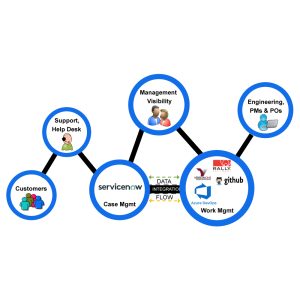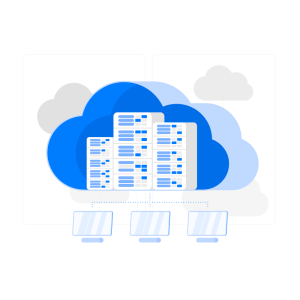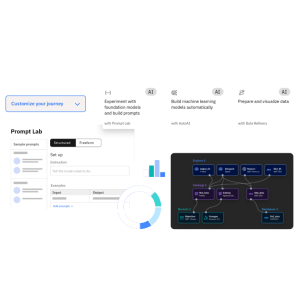When businesses start with Robotic Process Automation (RPA), they often begin by automating simple, repetitive tasks using a single bot. It’s an effective start. But what happens when you scale up? What if multiple bots need to coordinate, share data, or wait on the output of others?
This is where orchestration becomes essential.
Orchestrating multi-bot workflows isn’t just about running several bots at the same time. It’s about managing dependencies, timing, and task handovers to make sure that automation works as a system not as isolated bots. IBM Robotic Process Automation provides the tools to handle this complexity, enabling synchronized and efficient operations at scale.
Let’s take a deeper look at how to orchestrate multi-bot workflows effectively using IBM RPA, with a particular focus on dependency management and parallel execution.
Understanding Multi-Bot Orchestration in IBM RPA
In IBM RPA, multi-bot orchestration refers to the coordination of two or more bots working together to complete a broader business process. These bots may handle different stages of the workflow, operate in parallel, or depend on each other’s output.
What differentiates orchestration from mere execution is the presence of control. It’s not about launching multiple bots and hoping they finish. It’s about defining how and when each bot should operate, how they interact, and how the outcomes are handled.
IBM RPA makes this possible using:
- Orchestration Studio
- Bot Schedules
- Bot Dependencies
- Bot Connectors and APIs
- Workflow Designer (in IBM Process Mining integrations)
Together, these components help developers create automation pipelines that are dynamic, responsive, and scalable.
Mapping Dependencies Between Bots
Dependency management is the cornerstone of multi-bot orchestration. Poorly managed dependencies can cause delays, data corruption, and unnecessary bot idling.
Types of Dependencies You May Need to Manage:
- Data Dependencies: Bot B can only start after Bot A produces a data file or enters data into a shared system.
- Process Stage Dependencies: Certain bots represent specific workflow stages and must execute in sequence.
- External Dependencies: Bots may wait on user inputs, third-party API responses, or scheduled file drops.
- System Resource Dependencies: Bots should not overload systems by running simultaneous resource-heavy tasks.
How IBM RPA Handles It:
IBM RPA allows for precise dependency handling through:
- Environment Variables: Shared variables can be updated by one bot and read by another.
- Message Queues: Bots can communicate and trigger each other using queues.
- Scripts and Schedulers: Tasks can be time-triggered or event-triggered based on the availability of required inputs or system states.
- Error Handling Mechanisms: Retry strategies, fallback bots, and logging can help recover from failed dependencies without human intervention.
With these tools, dependency management becomes less about manual coordination and more about system logic.
Executing Parallel Workloads the Right Way
Parallel execution boosts throughput and reduces processing time if it’s done right.
Let’s say your finance team needs to process hundreds of invoices daily. Instead of assigning them to one bot sequentially, you divide the workload between ten bots and execute them simultaneously. But if each bot accesses the same data source or API endpoint without coordination, you risk performance issues or data conflicts.
Key Considerations for Parallel Execution:
- Workload Distribution: Tasks should be evenly distributed among bots. IBM RPA allows for queue-based task distribution where each bot pulls a job when ready.
- Concurrency Limits: Define how many bots can run concurrently based on license limits and server capacity.
- Data Segmentation: Ensure that each bot works on a unique data set to prevent duplication or conflicts.
- Error Isolation: Failures in one bot should not stop others. This requires sandboxed execution and retry logic.
IBM RPA includes features like Control Center and Workload Management Dashboards that let teams visualize, monitor, and control how bots are operating in parallel.
Designing an Effective Multi-Bot Workflow
Before implementing a multi-bot workflow, it’s important to model the entire process clearly. IBM RPA integrates with process mining tools that help uncover inefficiencies and propose automation paths.
Best Practices When Designing Workflows:
- Use Modular Bots: Break large processes into smaller, reusable bots. This promotes easier orchestration and maintenance.
- Establish Clear Handoffs: Bots should explicitly pass control or output to the next bot in the chain using APIs, files, or message queues.
- Implement Logging and Monitoring: Always capture logs for each bot to track performance and diagnose issues quickly.
- Fail Gracefully: Use conditional checks and recovery bots to handle failed processes without halting the entire workflow.
- Secure Communication: Use encrypted variables and token-based APIs when bots need to share credentials or sensitive data.
By following a design-first approach, teams can minimize integration issues and scale their automation with confidence.
Real-World Use Case: Order Processing Workflow
Consider a business that receives online orders, processes payments, checks inventory, generates invoices, and schedules shipments all through automation.
Here’s how multi-bot orchestration works in this scenario:
- Bot A: Collects new orders from the CRM system.
- Bot B: Verifies payment status via payment gateway API.
- Bot C: Checks inventory and initiates stock allocation.
- Bot D: Generates invoice and uploads to ERP.
- Bot E: Schedules shipping and sends confirmation email.
Each of these bots operates independently but must follow a specific order. Using IBM RPA’s orchestration tools, the process can be modeled as a unified workflow with triggers, retries, and fallback actions if any step fails.
Moreover, if 1,000 orders are received in a day, bots A to E can be deployed in parallel, processing different orders simultaneously while maintaining workflow integrity.
Monitoring and Continuous Improvement
Multi-bot orchestration doesn’t stop once workflows are deployed. Monitoring is key to ensuring that processes stay optimized.
IBM RPA’s Control Center allows businesses to:
- Track bot execution in real-time
- View logs and error messages
- Allocate licenses dynamically
- Prioritize critical workflows
- Make data-driven decisions on performance improvements
Additionally, integrating IBM RPA with IBM Process Mining or IBM Turbonomic can offer advanced recommendations for scaling, re-architecting, or modifying workflows to reduce delays and increase throughput.
Security and Compliance in Multi-Bot Environments
When multiple bots interact across systems and data layers, security risks increase. IBM RPA addresses these through:
- Role-Based Access Control (RBAC): Ensures bots only access what they’re authorized to.
- Audit Logs: Tracks every action performed by each bot.
- Token Management: Safely stores and rotates credentials used by bots.
- Compliance Reporting: Automates documentation for regulatory audits.
These controls allow teams to scale automation without compromising security or governance.
Conclusion: How Nexright Enables Better Orchestration Outcomes
Orchestrating multi-bot workflows is not just a technical upgrade, it’s a strategic move toward a more efficient, scalable, and intelligent automation environment. IBM RPA provides the right capabilities, but turning those into real business outcomes requires careful implementation, architecture, and ongoing optimization.
This is where Nexright steps in.
At Nexright, we don’t just implement IBM RPA, we design resilient, future-ready automation strategies. Our approach is grounded in engineering discipline, business logic, and hands-on experience. Whether you’re just starting out or looking to expand your automation footprint with multi-bot orchestration, our team ensures:
- Seamless design and integration of parallel workflows
- Accurate mapping of dependencies and triggers
- Scalable infrastructure planning for high-performance bots
- Continuous monitoring and improvement cycles
- Security-first deployment practices
If you’re ready to make your automation smarter, faster, and more aligned with your business goals, Nexright is ready to help.




